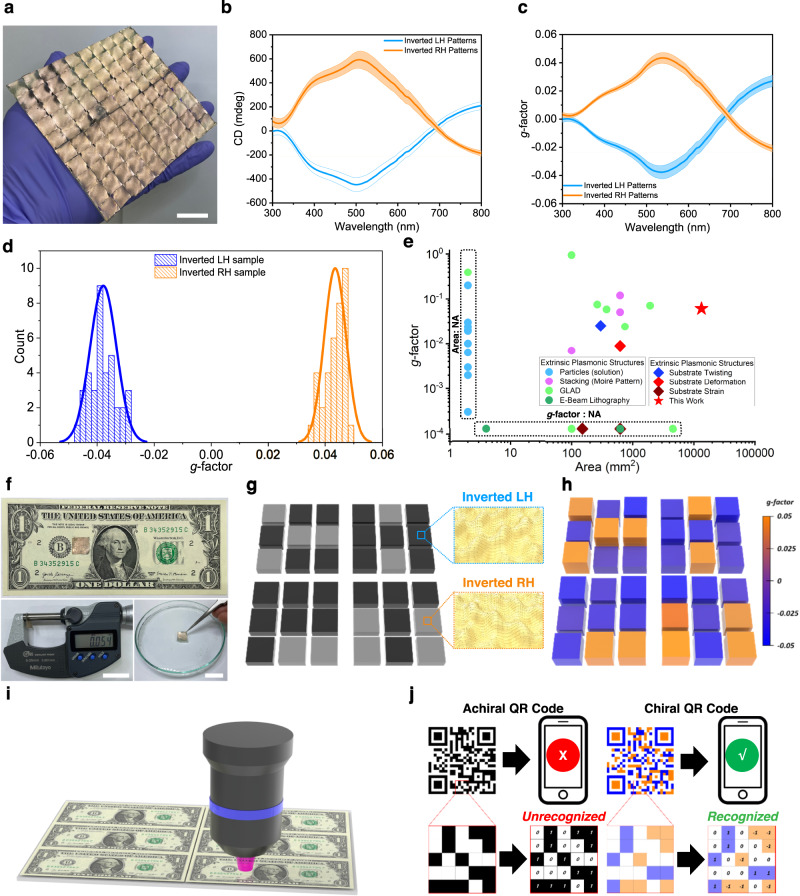Fig. 5. Optical properties of the large-area (11.7 × 11.7 cm2) chiral plasmonic films and small-area (1.3 × 1.3 cm2) chiral-patterned array for QR code application.
a Photograph of the large-area inverted LH-chiral plasmonic film (scale bar: 2 cm). b CD and c g-factor spectra of the 36 pieces cut from a large area of the inverted LH- and RH- chiral plasmonic film samples. Lines and the shaded areas are mean ± SD for 36 pieces. d Maximum g-factor value distribution of the 36 pieces cut from a large area inverted LH- and RH-chiral plasmonic film samples. e Comparison of the reported chiral plasmonic patterns with those in our work with respect to the g-factor and pattern area. Related references are provided in the Supplementary references 1–36. Related references are provided in the Supplementary Table 1 (NA: not available). f The chiral QR code (top) on a $1 bill: the thickness of the chiral QR code was measured using a micrometer (bottom left, scale bar: 2 cm); the chiral QR code floating in water is shown at the (bottom right, scale bar: 2 cm). g Schematic image, and h g-factor mapping results of the 54-μm-thick small-area chiral plasmonic arrays patterned in the shape of the letters “C,” “H,” “P,” and “T” for use in anti-counterfeiting. i, j Schematic diagrams illustrating the potential applications of our technique in i anti-counterfeiting and j as next-generation chiral QD codes.

